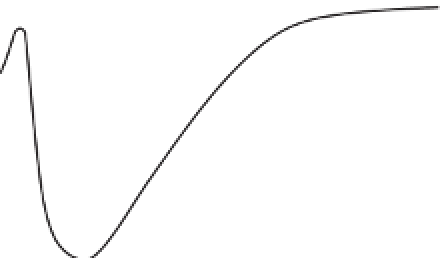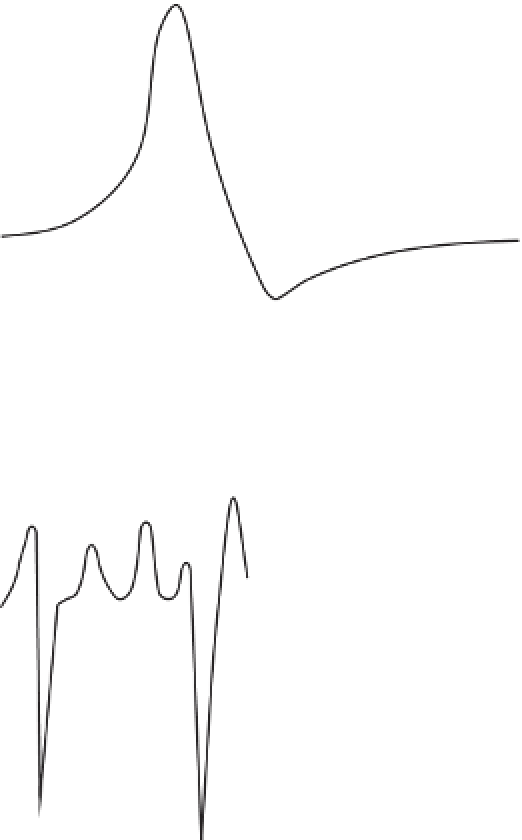Geology Reference
In-Depth Information
()
a
()
b
Sediment gain
Steady
state
Vertical accretion
Vertical
accretion
100 years
100 years
Vertical
erosion
High banks
less accessible
(Lateral erosion = lateral accretion)
Sediment loss
()
c
()
d
Mass movements
or small fluvial events
Colluvium, vertical accretion
100 years
100 years
Flushing
Figure 3.13
Four common patterns of valley sediment storage and flux under natural conditions. (a) Quasi-steady-state
typical of humid regions. (b) Great sediment influx with later amelioration producing vertical accretion of channels and
aggradation of floodplains. (c) Valley trenching (arroyo cutting). (d) High-energy instability seen as episodic gains and
losses in mountain and arid streams.
Source:
Adapted from Trimble (1995)
frost
and
snow
processes
separately
from
processes
areas where temperatures are sub-zero) to form discrete
masses of segregated ice.
Segregated ice
is common in
sediments dominated by intermediate grain sizes, such
as silt. Coarse sediments, such as gravel, are too per-
meable and very fine-grained sediments, such as clay,
too impermeable and have too high a suction poten-
tial (the force with which water is held in the soil
body) for segregation to occur. Frost action is cru-
cially determined by the occurrence of freeze-thaw
cycles at the ground surface. Freeze-thaw cycles are
associated with flowing ice in glaciers.
Frost and snow processes
The freezing of water in rock, soil, and sediment gives rise
to several processes - frost shattering, heaving and thrust-
ing, and cracking - that are intense in the periglacial
zone. Water in the ground may freeze
in situ
within
voids, or it may migrate through the voids (towards






















































